Wednesday, June 23, 2021
The heat is back... but it's also the time when the show season is in full swing! So how do you manage your horse's workload in summer?
Keeping your horse healthy and comfortable, while not losing out on performance, can be an ordeal. The Seaver team gives you its tips on how to make these two elements compatible.
First of all, to find out how heat affects our horses, we recommend you read our article on the subject.
Horses that have spent their winters in the pasture and those that have spent their winters in the stable will obviously not experience the transition between seasons in the same way.
First, a quick reminder. In a natural situation, horses spend between 12 to 15h of their day eating and looking for food.
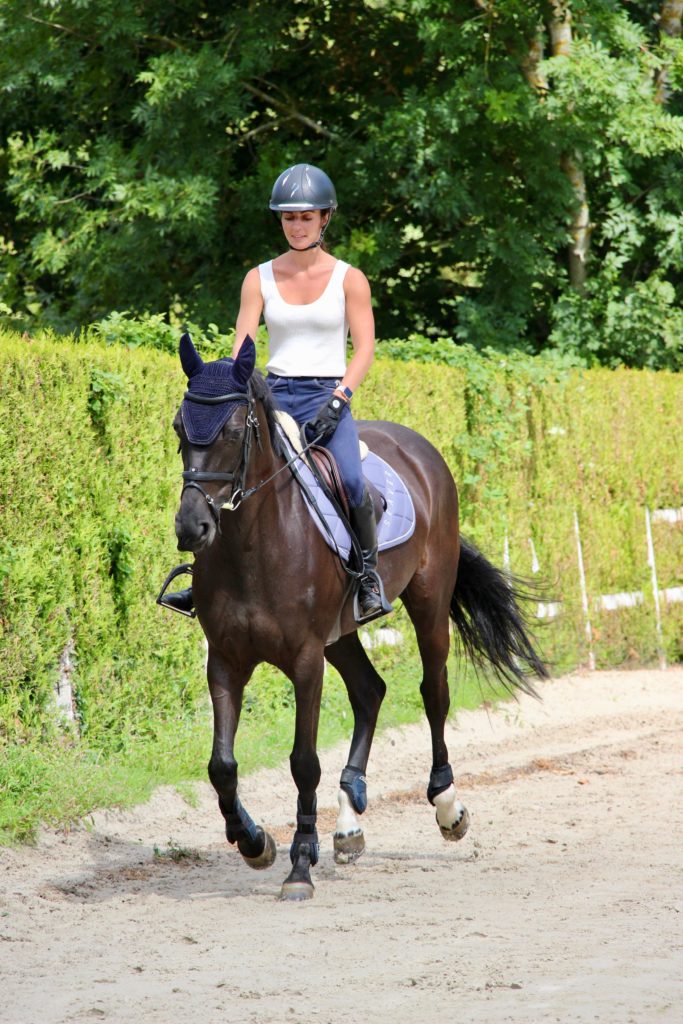
In the case of a stall horse who will remain in the stall. It's always essential that the horse's diet be based mainly on free choice hay.
In the case of a pastured horse. Now that the very fatty spring grass has passed, the grass dries out and loses its nutritional value. It is therefore very important to ensure that the horse does not lose too much weight. In the event of weight loss, it may be advisable to give your horse flaked rations to prevent him from losing too much weight.
If your horse's meadow has little or no grass, remember to give him hay so that he has as much as he wants.
In the case of a horse moving from the stall to the meadow. First of all, your horse will rush to the grass. This is not a bad thing, but to prevent him from putting on too much weight, think about reducing his usual rations so that he doesn't have an excess intake. If the grass in your area is very dry, don't take this advice into account.
For all horses: don't hesitate to use feed supplements to provide your horse with all the minerals, vitamins and trace elements it needs. Used as a pre-summer treatment, supplements are ideal for keeping your horse physically and mentally fit.
First of all, it's vital that your horse always hasfresh water available. However, it must not be ice-cold.
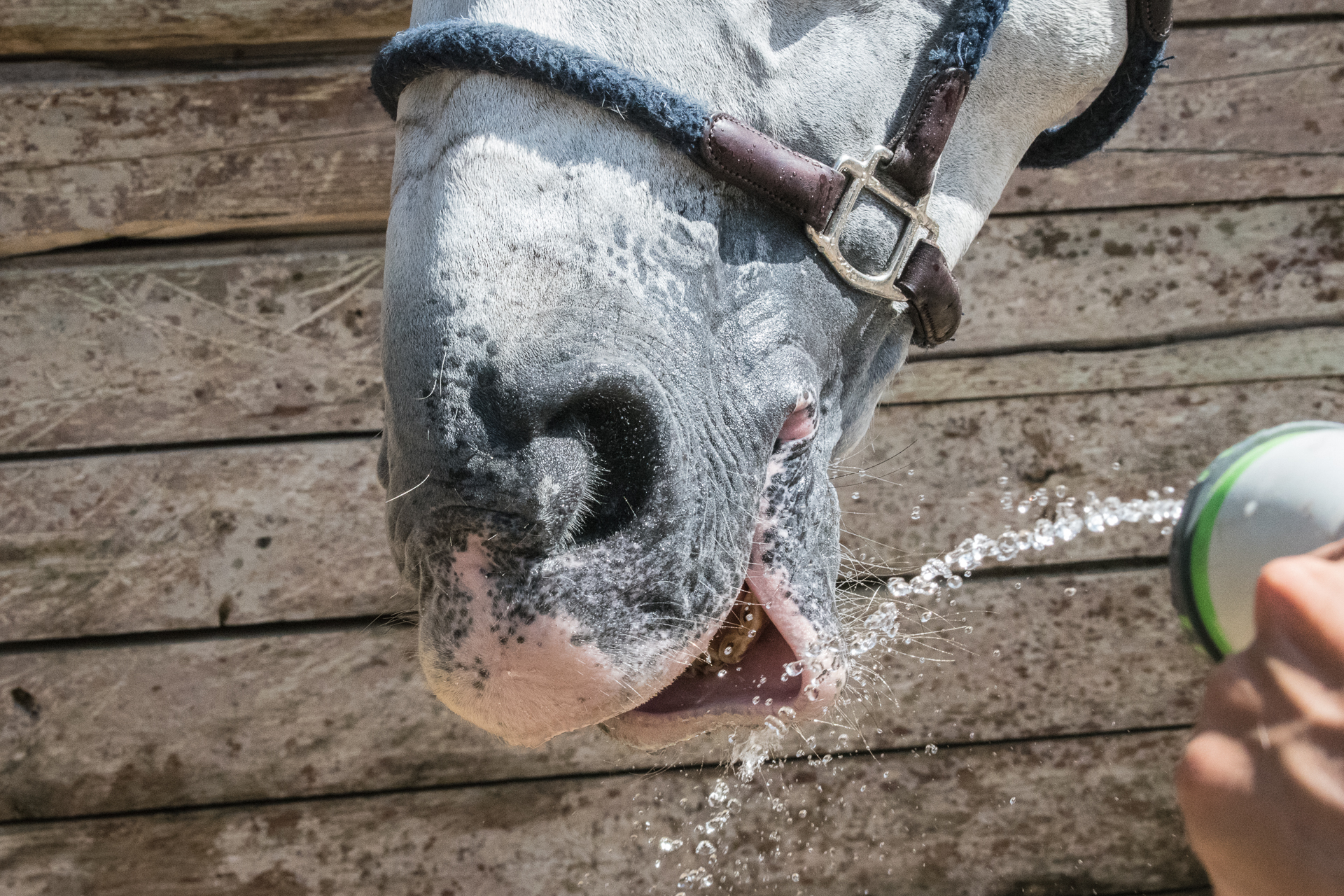
It's also essential to provide a shaded area, especially during the hottest hours of the day. It's even better if this area is ventilated (choose a tree that will create shade rather than a shelter where the air can't circulate).
To keep him cool during the hottest hours, and if you have the chance, you cantake himto graze in the undergrowth. This will keep him cool for a few hours.
La douche est également une bonne idée, mais le plus important est que vous passiez le couteau de chaleur sur le corps de votre cheval. Cela permettra d’éviter l’effet sauna. Si vous ne passez pas le couteau de chaleur, l’eau se réchauffera au-dessus du poil de votre cheval et cela créera l’effet inverse de celui escompté.
Après la douche, si votre cheval se roule, ne le rebrossez pas ! La « croute » formée par le sable ou la terre le protègera du soleil ainsi que des piqûres d’insectes.

It's very important to leave your horse a salt stone so that he can lick it if he lacks minerals (which he will lose through perspiration).
First of all, use common sense. Don't take your horse out between midday and 4pm, preferring to ride in the morning or evening. Don't plan overly physical sessions on days when the weather forecast calls for high temperatures. If you can also ride in a shaded arena, that's ideal: no sun and plenty of air!
When grooming, make sure your horse isn't engorged: in the heat, the blood doesn't circulate as well, just like it does for us! You can even give your horse a quick shower on the limbs before riding, to refresh him.
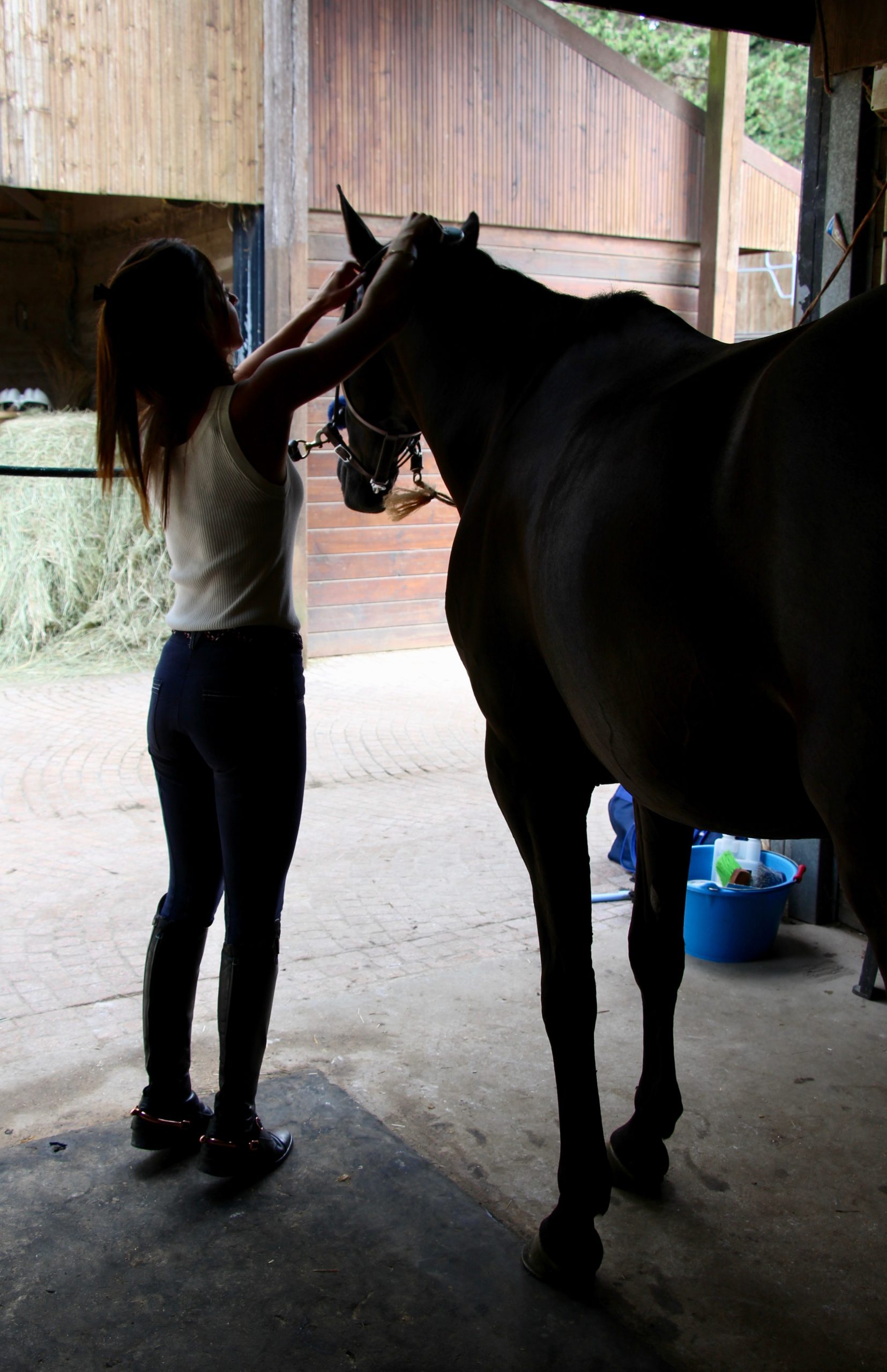
Remember to use insect repellent to avoid insect bites at work.
Remember to leave him a bucket of clean, fresh water even in the grooming area, so he can hydrate if he needs to.
More than ever in summer, your horse needs breaks. It's hotter, so he tires faster. An exhausted horse is a horse that doesn't perform well. Remember to let him breathe. Between each stage of your relaxation, before moving on to the other hand, any excuse is good enough to stop for a few minutes.
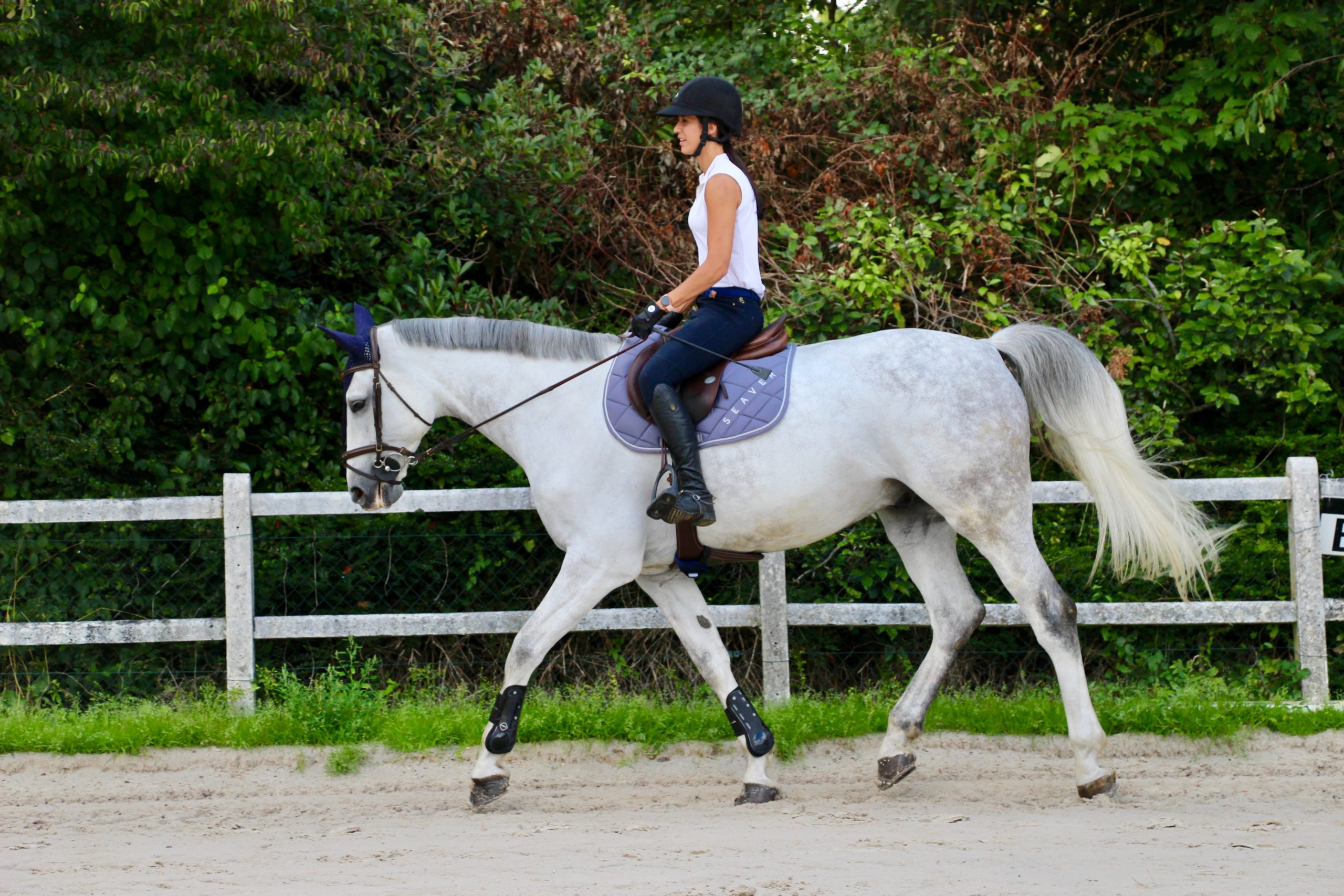
Don't hesitate to shorten your sessions. Most of the time, 30 minutes is more than enough.
Remember to leave a bucket of fresh water in the shade in the arena so that your horse can quench his thirst during your breaks. Leave a bottle of water for yourself too 😉
After your session, offer your horse water and take him for a walk. It's best to go for a walk in the cool shade of an undergrowth. But if not, the quarry will do too!
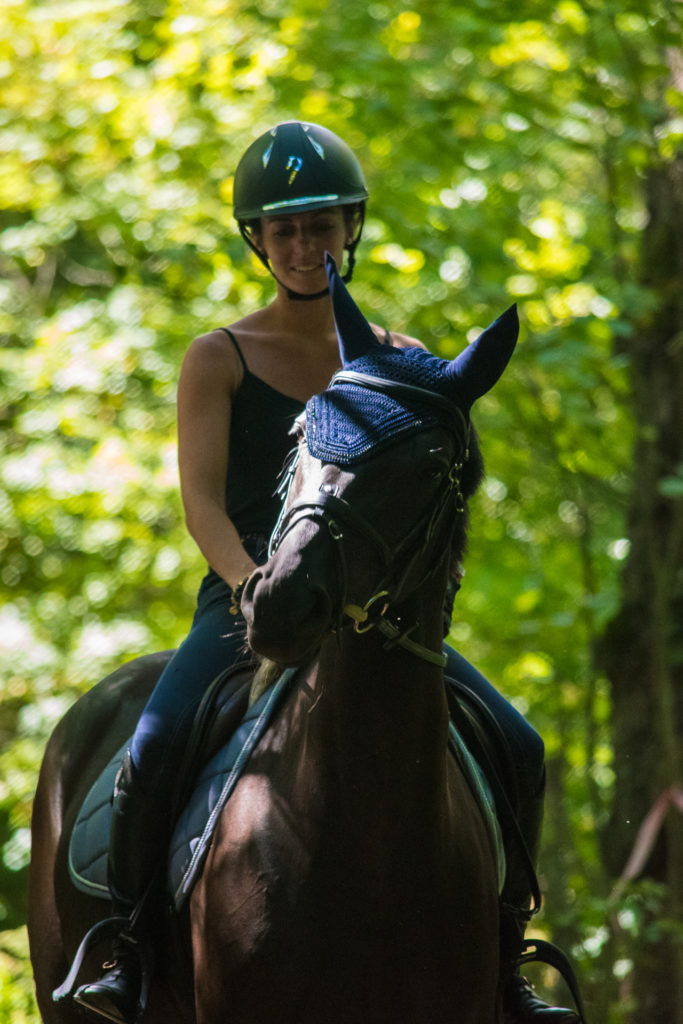
Walk for a long time so that your horse's heart rate can return to normal (in the heat, it's bound to be higher than usual). If you want to monitor your horse's heart rate, we've created the CEEFIT + CEEFIT Pulse & ECG pack. It will also tell you your horse's recovery time, which is very useful in summer.
Once you've dismounted, don' t shower your horse straight away! He could suffer from thermal shock. Give him ten minutes or so in a cool, quiet place tocool down on his own.
Then you can shower him (fully or not, depending on the temperature). Once showered, don't forget the heat knife.
If you own a pair of cooling gaiters, now is the time to put them on! To make a homemade version, all you have to do is put some thermal pockets in the fridge and apply them under a pair of rest gaiters (be careful not to leave them on for more than an hour).
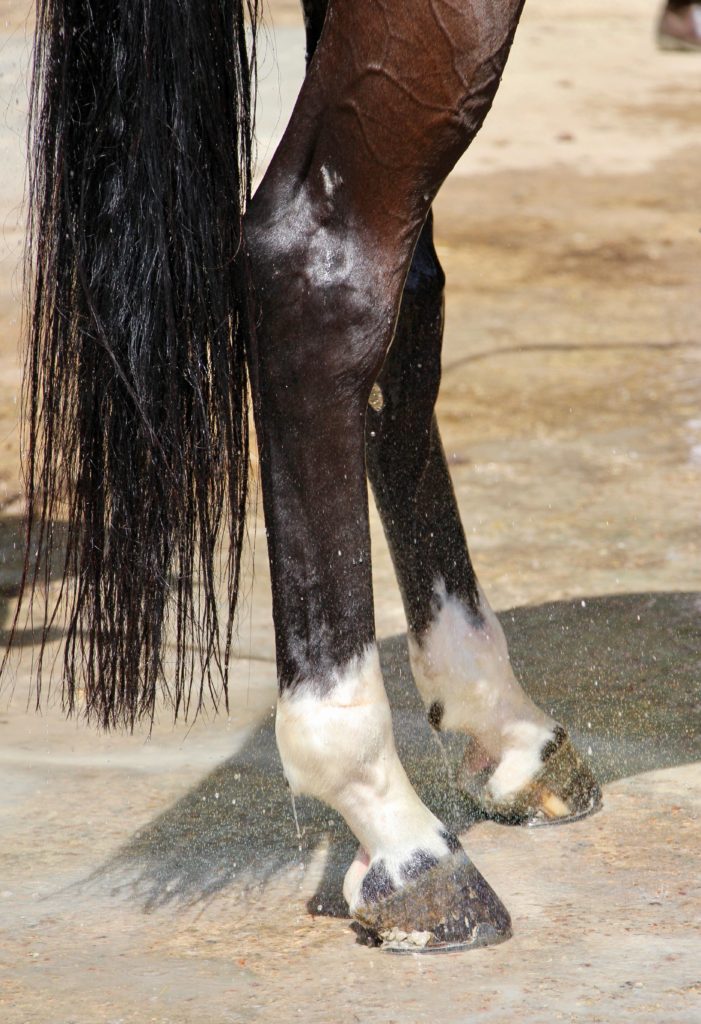
You can then take him out to the meadow or paddock to walk and stretch his legs.
You can also give him electrolytes (a post on this subject is coming soon on our instagram).
By following these tips, your horse will be at the top of his game, without having to stop working because of the heat!
See you soon in our next articles on horse comfort in summer!